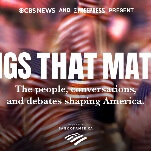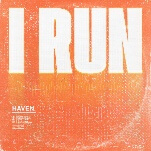That crazy Atari box art inspired some badass childhood interpretations
Cover Up
Earlier this week, The A.V. Club’s resident illustrator and art expert Nick Wanserksi gave us the first taste of what he has in store for his new visual-design-focused column, Art Of The Game. In this debut installment, Nick looked back at the over-the-top box art of Atari 2600 games, writing about how they ended up that way and what they conveyed. Down in the comments, Jakeoti added some more interpretations:
You really have to wonder how much the designer was actually in contact with the studio. Especially given the fledgling industry, it wouldn’t be surprising to me if the artists were often just told a concept and never got to actually play the game. There’s also something to be said for how different territories took on box art, with western versions often going for a more “mature” look than their Japanese counterparts. One only needs to look at the old Mega Man box art for examples of that. And that is another neat look at these Atari boxes: So many of the Hendricks and Spohn artwork is clearly meant to be mature. The intended audience is adult. It would have been easy turn the colorful blocks of Breakout into cartoon characters or have the Othello box be two kids playing the game. But, no. The Atari wasn’t marketed as a toy. That role would be played by the NES in a post-crash world. The Atari was expensive, so it marketed itself as an expensive piece of tech. The box art definitely reflects that.
Elsewhere, Tempasfugit brought up a good point about the rainbow motif, which Nick reckoned was a method of representing games as a dynamic medium, that was seen on Activision’s games of the era:
The rainbow served the same purpose it did in Apple’s logo in the 80s: It was saying “These games are in color.” It might be hard to believe for current generations, but in the late ’70s/early ’80s, if you were lucky enough to have a “second TV,” it was inevitability a black-and-white TV. Also, a lot of computers were black and white (hence Apple’s distinction, despite its own B&W foray, the original Mac). The rainbow was mission-critical advertising to make sure consumers knew they were buying a color product at the time. Lots of black-and-white games had color elements in their box art, so the rainbow—a suitably ’70s friendly motif—was the go-to standard, at least in my experience.
And Tony Macaroni told us about the awesome stories those wild covers inspired:
When I was a kid, I found old Atari video games and made up movies in my head based on the cover art—including Backgammon, which was a Color Of Money-style look at the high stakes world of the professional backgammon circuit; Basic Programming, which was about a space station controls operator trying to deal with a possible malfunction with the computer system that could lead to catastrophe; and Street Racer, which was kind like Two Lane Blacktop combined with Fast And The Furious (long before that film was released) and was about a couple daredevil racers trying to make it in the illegal racing circuits driving everything from motorcycles to classic muscle cars.
In his article, Nick singled out Othello is one of the weirder Atari boxes and wondered who that man on the cover is supposed to be. The Space Pope has an idea:
I’m surprised at the confusion over who the guy on the Othello cover is supposed to be. It’s clear to me that this is William fuckin’ Shakespeare himself, traveling centuries into the future to ruin your shit at a game he doesn’t even have anything to do with, just out of spite that some marketing flack slapped the title to one of his masterworks on it. You see that sly little smile of his? That’s the smile of a certified grade-A genius taking his vindictive cross-time jaunt completely in stride because listen son, he wrote The Tempest, you think this fourth-dimensional shit’s going to faze him? Fuck you, I’m William Shakespeare, all the world’s a stage and all the men and women are merely worse players of Othello than me. Your turn, future man. Go on, surprise me.
Hit My Theme
Also this week, Internet Culture Editor Clayton Purdom weighed in on his experiences with the first hours of Sony’s latest PlayStation 4 exclusive Horizon: Zero Dawn. He talked about it in relation to a prevalent sub-genre he called “map games,” those like Assassin’s Creed or Far Cry where most of your time is spent chasing after the dozens of icons that fill up your map of the open world. In the comments, DL reckoned this style of game has become so pervasive that it’s now down to the setting and trappings to make them stand out, rather than how the game actually plays:








































